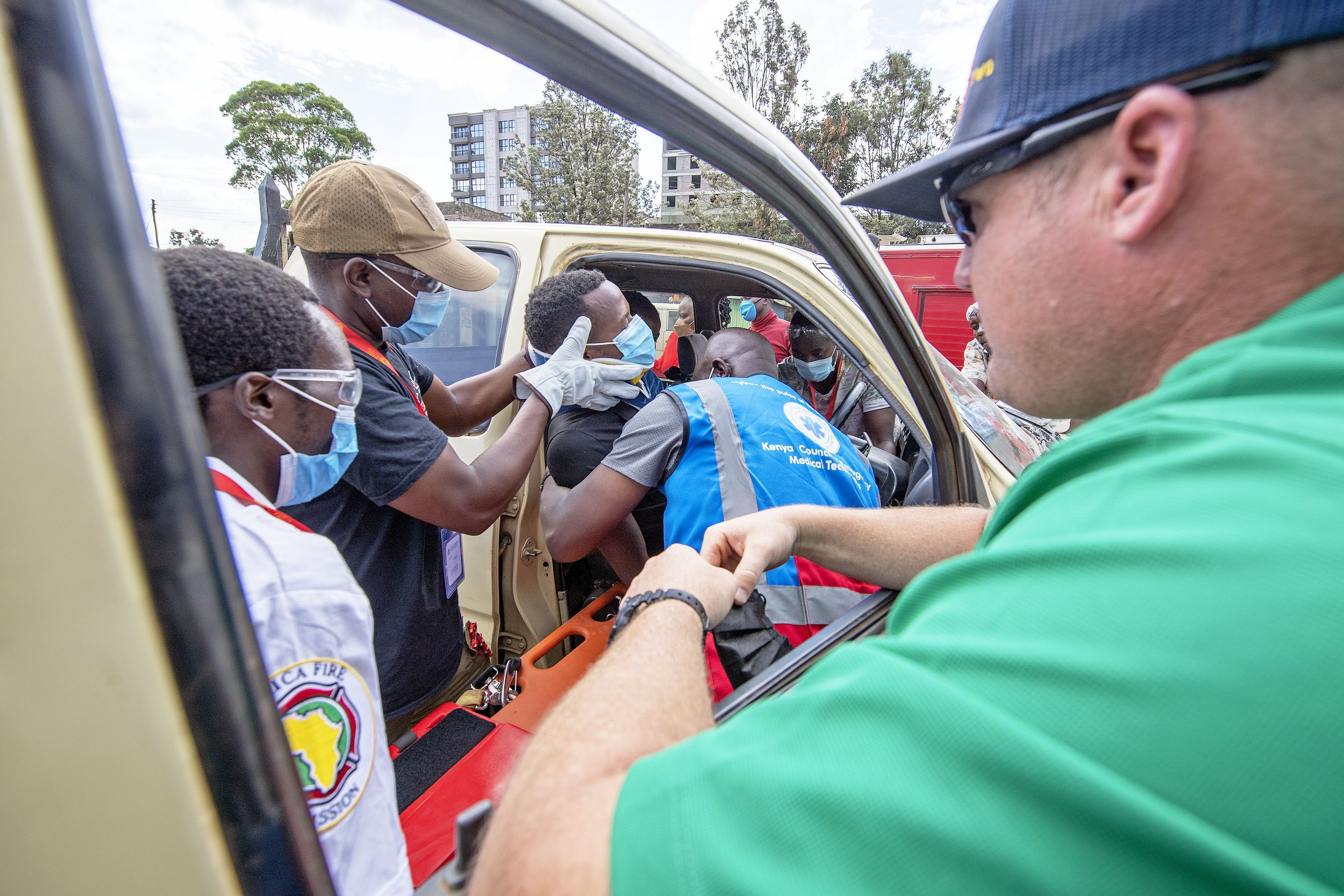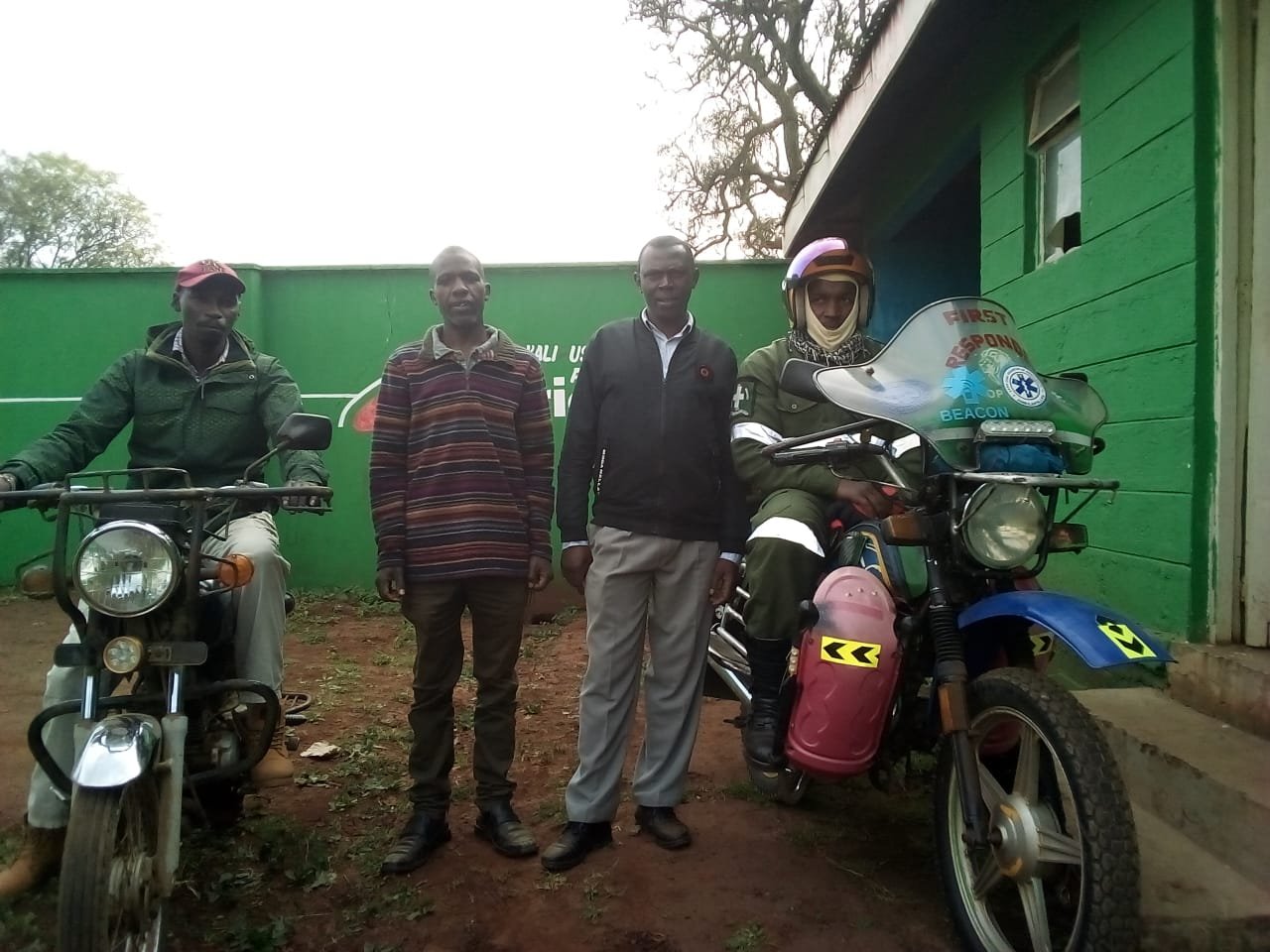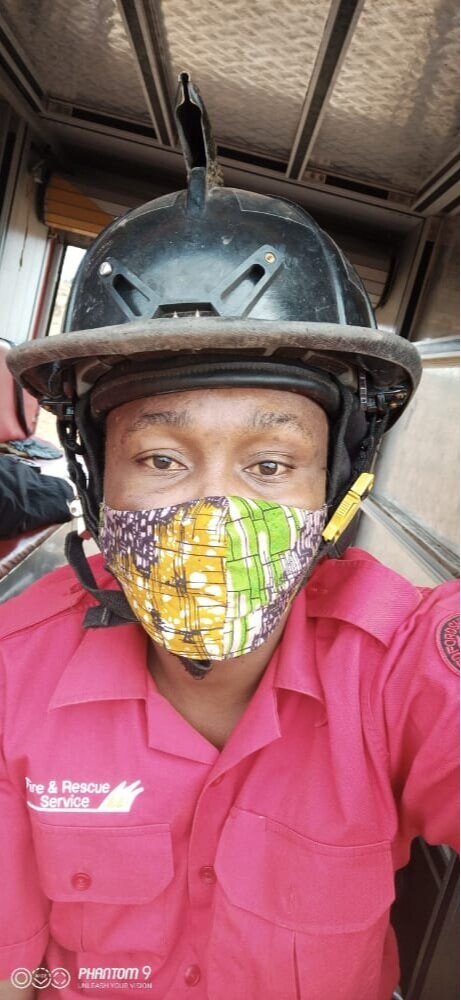When Dave and Nancy , Co-Founders of Africa Fire Mission, went to Kenya in November 2012. One of the things that surprised them was the lack of knowledge around fire prevention and fire safety. In the US, children start to learn about fire safety in Pre-School and fire prevention messages and what to do in case of fire are integrated into school and work for many Americans. In most of Africa we have learned that there is very little education around fire prevention or fire safety.
As soon as Dave saw the gap he invited the Nairobi Fire Service to come to Missions of Hope International (AFM’s first partner) to teach the teachers a little about fire prevention. Stop, Drop and Roll, Crawling Under Smoke (Get Low and Get Out), how to call the fire department and how to use a fire extinguisher were among the first lessons taught. That first fire prevention session in Nairobi had about 30 participants - since then AFM has been growing our fire prevention program through curriculum and a train the trainer model through CHE (Community Health Education).
This October, Kenya participated in Fire Prevention week - at least 10 counties participated and more than 40,000 individuals received direct training in fire prevention! Children and adults conducted fire drills in their schools and businesses. Firefighters went into their communities and shared safety messages in churches, schools, businesses and anywhere that people gathered!
Indirectly, the impact was pretty great too! There were walks to raise awareness and media campaigns to share the work! Millions were impacted indirectly through these collaborations!
At Africa Fire Mission we are committed to continue to increase the impact of fire prevention and safety to save lives! It is important to our mission just as training firefighters. Our curriculum is available for free on our website - check it out here: Fire Safety Curriculum and we’d love for those using our curriculum to report their training experiences here: Report
To all the firefighters in Kenya that are spreading the message of fire safety - Asante Sana (thank you!) We can’t want to see the multiplication continue in Kenya and across all of Africa!














































































































